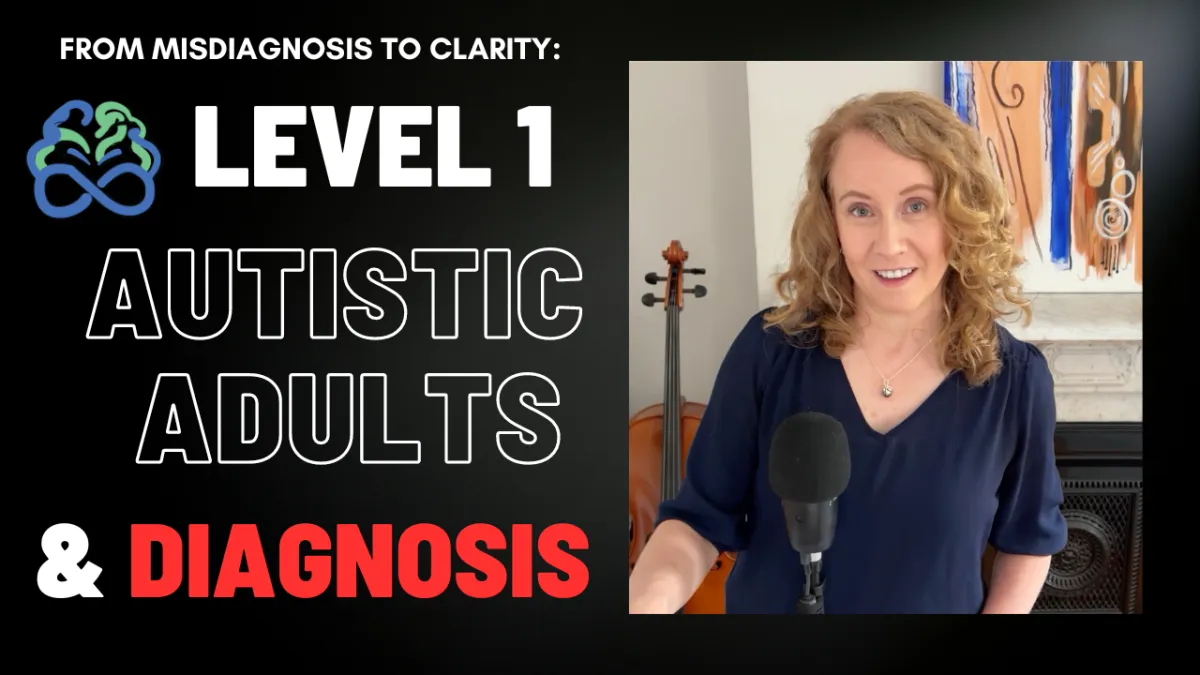
From Misdiagnosis to Clarity: Level 1 Adult Autism in the 21st Century
The landscape of autism diagnosis has shifted dramatically since the 1990s, leading to a significant increase in the identification of autistic individuals, particularly among children. However, this diagnostic wave largely bypassed those born before this period, leaving a generation of autistic adults undiagnosed and struggling to navigate a world that often misunderstood them. Today, many of these individuals, now adults, are beginning to recognize their place on the autism spectrum, prompting a crucial reevaluation of their life experiences and mental health challenges.
The Historical Context of Autism Diagnosis
Before the 1990s, the criteria for diagnosing autism were narrow and often limited to more overt and severe presentations of the condition. As a result, many individuals with milder or less obvious symptoms were overlooked. This began to change in the 1990s when the professional community broadened its understanding of autism, leading to a significant increase in diagnoses, particularly among children. These children, diagnosed in the 1990s, 2000s, and 2010s, have since grown into adults who understand their neurological differences and actively engage in spreading awareness about autism.
The Lost Generation: Adults Who Missed Out on Early Diagnosis
For those born before this diagnostic expansion, the story is quite different. Many of these individuals, who constitute what is often referred to as the "lost generation," have spent their lives without the benefit of understanding their autistic identity. As children, they were frequently misdiagnosed with various mental health conditions, such as bipolar disorder, borderline personality disorder, eating disorders, and even schizophrenia. While some of these diagnoses may have captured aspects of their experience, they often missed the underlying reality of autism.
The Journey to Self-Discovery and Professional Recognition
As awareness of autism has grown, these undiagnosed adults have started to piece together their experiences and recognize the signs of autism in themselves. The internet has played a pivotal role in this process, providing a wealth of information and a platform for autistic adults to share their stories. This has led many to seek professional evaluation, often after a lifetime of receiving treatments and resources that didn’t fully address their needs.
However, the journey to an accurate diagnosis can be challenging. The professional community is still catching up with the nuances of adult autism, particularly in those who have spent decades developing coping mechanisms that mask their symptoms. These individuals often present with a complex clinical picture, sometimes leading to diagnoses of co-occurring conditions like anxiety or depression, which, while accurate, may not tell the whole story.
The Importance of Accurate Diagnosis and Understanding
Accurate diagnosis is more than just a label; it is a key to understanding oneself and accessing appropriate support. For many in the lost generation, a correct autism diagnosis can bring immense relief, providing a framework for understanding their life experiences and the challenges they have faced. It can also lead to more effective treatment strategies, particularly for co-occurring conditions like anxiety or eating disorders that may be intertwined with their autism.
Moreover, recognizing autism in these individuals can help tailor interventions that address the root of their difficulties, potentially alleviating years of unnecessary suffering. For instance, understanding the sensory sensitivities or social communication differences inherent in autism can lead to more personalized and effective therapeutic approaches.
The Need for Continued Awareness and Research
As more of the lost generation comes forward, it is crucial for the professional community to continue expanding its understanding of adult autism. This includes recognizing the diversity of autistic experiences and the ways in which autism can manifest differently across the lifespan. The acknowledgment of subtypes, such as ASD-P (ASD with a propensity for psychosis), highlights the need for ongoing research to refine diagnostic criteria and treatment approaches.
In conclusion, the growing recognition of undiagnosed autistic adults marks a significant moment in the field of neurodiversity. It underscores the importance of accurate diagnosis, not only for the individual's well-being but also for the broader understanding of autism. As the professional community continues to evolve, it is essential to ensure that all autistic individuals, regardless of when they were born, have access to the support and resources they need to thrive.
Support for Professionals and Clients:
Neurodiverse Credentialing and Practice Support for Psychologists, Therapists, Social Workers, Clergy, and Domestic Violence workers is available here.
Autistic and non-autistic members of neurodiverse family systems can reach out for support here.
Resources for Further Exploration:
Read Anne MacMillan's 2026 book entitled Neurodiverse Family Systems: Theory and Practice, available for pre-order.
View Anne MacMillan's 2019 YouTube video entitled "Autistic Adults who aren't Diagnosed."
Read the pdf of a 2015 review article entitled "How and Why is Autism Spectrum Disorder Misdiagnosed in Adult Patients? From Diagnostic Problem to Management for Adjustment" by K. Takara, T. Kondo, and T. Kuba originally published in Mental Health and Family Medicine, 11:73-88, doi:10.25149/1756-8358.1102011
Read the 2017 ASD-P (ASD with a vulnerability for psychosis) research by Felicity V. Larsen et al. "Psychosis in Autism: Comparison of the Features of Both Conditions in a Dually Affected Cohort" as published by the British Journal of Psychiatry, 210(4):269-275, doi:10.1192/bjp.bp.116.187682. Other authors: Adam P. Wagner, Peter B. Jones, Digby Tantam, Meng-Chuan Lai, Simon Baron-Cohen, and Anthony J. Holland.
